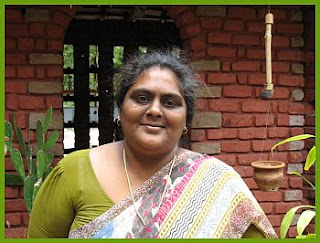
His current workshop is located in a busy residential area popular with Westerners during the busy season. But its not just the homes of Westerners that display his furniture, as the economical and aesthetic furniture is evident in homes and stores throughout the area.

The current rented premises used to be a primary school until the school became popular and over subscribed and eventually had to move to a larger facility. Eventually this quaint little house will be torn down and a hotel or boarding house put up in its place as this area is one of the most expensive spots in Tiruvannamalai.

Arumungam has a variety of books of cane and bamboo furniture from all over the world. You pick the picture, agree the price and he can make you anything you wish for and some of his work is really wonderful.

He has both men and women working at his small shop and showroom, most of whom were trained by Arumungam.

As well as furniture, baskets, bowls and bric-a-brac, all sorts of household items are available for purchase at his showroom.

Recently Arumungam started a sideline of restoring and selling antique furniture bought in villages around the Tiruvannamalai District. Its a particularly advantageous business because much of the wood used in old furniture is now protected and cannot be used any longer. I got myself a beautiful antique Burma Teak wardrobe for just Rs.6,000 a purchase I was very satisfied with. Rather like the table and chairset in the below photograph . . . I wonder?

In the last photograph is Arumungam's wife who knows absolutely nothing about furniture making and enjoys staying in their home (attached to the showroom) looking after the needs of her husband and two young daughters.

Well at least Arumungam doesn't have much in the way of competition, his is the only cane and bamboo showroom in Tiruvannamalai!










































